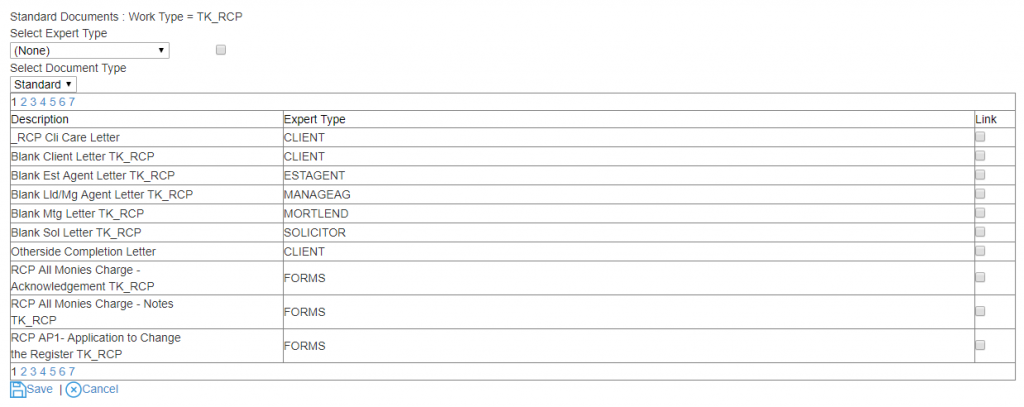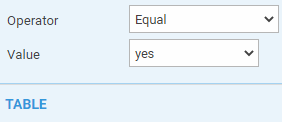Create and Edit Workflow Tasks
Updated Apr 11th, 2024
Who is this guide for?
Case Management Supervisors and System Supervisors
This guide will go through creating and amending your workflow tasks to tailor them to the needs of your firm. Which may in turn be linked to workflow https://support.ospreyapproach.com/guides/create-and-edit-workflow/
Add a Basic Workflow Task
Step 1
In the ‘Supervisor’ area of Osprey, go to ‘Case Management Setup’. To create a new task (or step) to house the document, go to ‘Tasks’, then select ‘Create Task’.

Give the task a description. If you use the Client Portal, enter a Web Description. Now choose the work type that this task will be used for and click ‘Save’ to save the new task.

Step 2
You now need to add some actions to this task. Right-click on the relevant task and then select the ‘Link’ button to open up your options.
The actions available are as follows:
- Add Matter History item
- Send an automatic email to a client
- Display a message to the user
- Send Standard Document
- Ask user for text input
- Add a Keydate to matter
- Add an automatic Keydate to matter
- Send an email to a client
- Allocate a Web Questionnaire
- Allocate a Custom Questionnaire
- Send an email to a user
- Send a text message to a client
- Add a Cheque Requisition
- Add a Dossier Date
- Add a Keydate linked to Dossier Field
- Meet Unmet Keydates by Type
- Set Dossier Field
- Open a read-only document
- Display a Matter View
- Display a Matter View in Web Publisher
- Display a Client View in Web Publisher
- Send XIT2 Acknowledgement
- Send XIT2 Milestone Info
- Tick Task
- Run IHT205
- Run IHT400
- Send merged email template
- Post to Debt Ledger
- View Debt Summary
- Posting to Time Ledger
- Send an automatic email to a user
- Unpublish a Published Matter
- Update Workflow Status Bar
- Update Chain View Status
- Produce Oyez Form
- Produce Land Registry Search
Select the action you want to insert into your workflow task by right clicking and then choosing the ‘Select’ button.
In our example we will add a ‘Send Standard Documents’ action, which will run one of your standard documents available in Osprey and then, when closed, give you the option to save the document to the matter history.
Step 3
Once you have selected the ‘Send Standard Document’ task, a list of available documents will be shown. These will all be of the same worktype as the selected task.

Tick the box in the ‘Link’ column for any letters you wish to include in your task, then select the ‘Save’ icon. Your letters will now appear on the left-hand side.

Click on the ‘Save’ icon in the top left to keep your changes to the task.
Step 4
The task will now need to be linked to the Workflow you wish to use it in. Go to your ‘Supervisor’ area in the left-hand side panel and select ‘Case Management Setup’.
Now select ‘Workflows’ to open the list of currently available workflows.
Go through the list and locate the workflow you wish to add the task to. Right-click on it and select the ‘Link Tasks’ icon.
On the right hand side of the screen, locate your newly created task and click the ‘Select’ icon.

Your task will now appear on the left-hand side. You will be able to see the details of the actions which make up your task. Select the ‘Save’ icon in the top left to keep your changes.

Now click ‘Back’ to return to your workflows list.
Step 5
You are able to edit any of your existing tasks. Go to ‘Supervisor’ and select ‘Case Management Setup’, then click on ‘Tasks’. Select the relevant worktype and then right-click on the task and select ‘Link’ to bring up the task details.
You may add new actions using the method described previously. You can also drag and drop existing actions by holding down the left mouse button on the relevant action and dragging it to the appropriate place.
Once you have finished editing, select ‘Save’.
Adding Criteria to Workflow Tasks
Step 1
Actions that can have criteria set against them will have the following symbol showing to the right hand side of the actions heading.


This option gives the ability to set criteria on certain action types and, once set, criteria can decipher whether an actual action is run or not dependent on information filled in on a client’s file and matter. Criteria can be set on the following action types
Send an automatic email to a client
Send Merged Email Template
Send an automatic email to a user
Display a message to a user
Send Standard Letter
Add an automatic key date to a matter
Allocate a custom questionnaire
Send an email to a user
Send a text message to a client
Add a key date linked to a dossier field
Meet unmet key dates by type
Open a read only document
Tick Task
Step 2
Criteria is set based on existing data held on a client’s matter and file. This can be information held at both Client and Matter level, for example, standard system information such as details from the address page or matter page. If available, information can be used from both Client and Matter level dossier pages.

Step 3
Logical Operator – Use the ‘Or’ Option if you wish an action to run when either one or more criteria are met. Use the ‘And’ Option if you only wish an action to run if it meets multiple set criteria.

Step 4
If Dossier remains unchecked, you will have the ability to set criteria based on standard system information from the areas shown within the drop down menu.

Step 5
If you check the Dossier option, you will have access to Dossier pages (both client level and matter specific) and the fields within them, this will depend on the system set-up
When setting criteria you also have the following functions available:

Equal to: When added, the operator will display as ‘=’. Use this option when you wish an action to run if the selected field’s data is equal to the specified criteria.
Not Equal: When used, the operator will display as ‘N’. Use this option when you wish an action to run if the field’s data is not equal to the specified criteria.
Greater Than: When used, the operator will show as ‘>’. Applicable when setting criteria against numeric values/fields. Use this option if you wish an action to run if the selected field’s data is greater than specified criteria.
Less Than: When used, the operator will show as ‘<‘. Applicable when setting criteria against a numerical value/field. Use the option if you wish an action to run if the selected field’s data is less than the specified criteria.
Is Empty: When used, the operator will show as ‘E’. Applicable when setting criteria against fields that have not had any data added to them such as a date box or text box. Use this option if you wish an action to run if the selected field’s data is empty.
Is Not Empty: When used, the operator will show as ‘F’. Applicable when setting criteria against fields that have had any data added to them. Use this option if you wish an action to run if the fields contain data.
Step 6
Click the Add icon


You may add further criteria if you desire and click Save when finished.